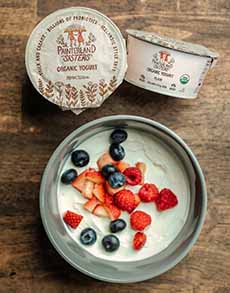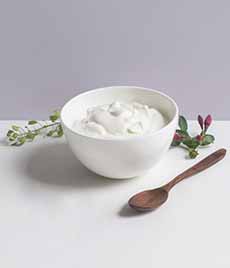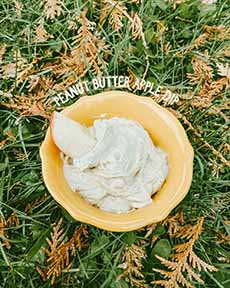Painterland Sisters Skyr Yogurt For National Greek Yogurt Day
|
|
November 9th is National Greek Yogurt Day. We’ve written lots about Greek yogurt, and much less about its Norwegian-Icelandic cousin, skyr (pronounced SKEER). With both Greek yogurt and skyr, more of the water is strained away, creating the extra-thick, creamy texture and mouthfeel. Skyr is thicker than Greek yogurt and less tangy-an option for those who find plain Greek yogurt a bit too tangy (photo #4). Painterland Farms is a fourth-generation organic farm owned by the Painter family. Sisters Stephanie and Haley Painter, who manage the yogurt business, are two of the four siblings of the current generation. In the rolling hills of north-central Pennsylvania, they aim to preserve, showcase and utilize their family’s organic dairy and crop farm. They practice regenerative farming. Painterland skyr is absolutely delicious. The sisters have created a brand of whole-milk skyr with five flavors, each high in protein and probiotics, and low in sugar (the total sugar in sweetened varieties is 7g). Painterland skyr is thicker and creamier than the Greek yogurt standing next to it on the shelf. That’s because it has 6% milkfat instead of the typical 5% of whole milk Greek yogurt. (As with, say, 0% skim milk versus 1% versus 2%, you can taste the difference added by each percentage of fat.) Each 5.3-ounce cup has: Painterland skyr is organic, non-GMO, lactose-free, and gluten-free. The brand is certified OU Kosher (Dairy). One of the things we like best about skyr versus Greek yogurt is that skyr has less sugar in the sweetened flavors. Painterland uses organic cane sugar, but not that much of it. It may not be the liking of those with a sweet tooth, who prefer a more preserves-packed yogurt. But we’re very content with the low level of sugar in Painterland skyr. It engenders a more subtle flavor that lets the clean, pure, creaminess of the yogurt shine through. Discover more at PainterlandSisters.com. Skyr is a yogurt-like product that has been around for more than 1,000 years, since the days of the Vikings. (Greek yogurt has probably been around since ) It originated in Norway and became a diet staple in Iceland as well. It’s believed that some version of skyr predates the Viking settlement of Iceland in 874 C.E. (although perhaps it was as early as 800 C.E.—here’s more about the Vikings) [source]. Icelandic skyr was and is made from skimmed raw sheep’s milk or cow’s milk. The commercial distribution of skyr outside of Iceland increased in the 2010s. Marketing positioned skyr as a low-sugar, no-fat, high-protein product consumed as a snack. (In fact, it can be consumed in any way that yogurt is consumed, at every meal of the day.) In 2012, 80% of exported Icelandic skyr went to Finland and 20% to the U.S. [source]. Skyr changed slightly in America: Some producers made it from whole milk in addition to or instead of a skim milk variety. It was also made without rennet, an organic substance that contains the enzyme rennin. It can be obtained from certain animals and plants. And it is an essential component of cheese: it coagulates milk into curds and whey. You may hear of skyr being called a yogurt cheese. Some skyrs are made with rennet, which makes them technically cheeses. Why use rennet? It’s a natural coagulant that makes the product thicker. The category of spoonable dairy products can be broken down into technical cheeses and non-cheeses. The use of rennet turns skyr, and other products such as fromage blanc and quark, into cheese. This is technically so, even though they look the same (relatively speaking) as yogurt, sour cream, or other soured and or cultured milk product that is made without rennet and is not a cheee. You can’t tell the difference between these “cheeses” and “non-cheeses” by looking at them or tasting them. It’s all in the recipe. ‘Nuff said?
|
|
|
|
||






